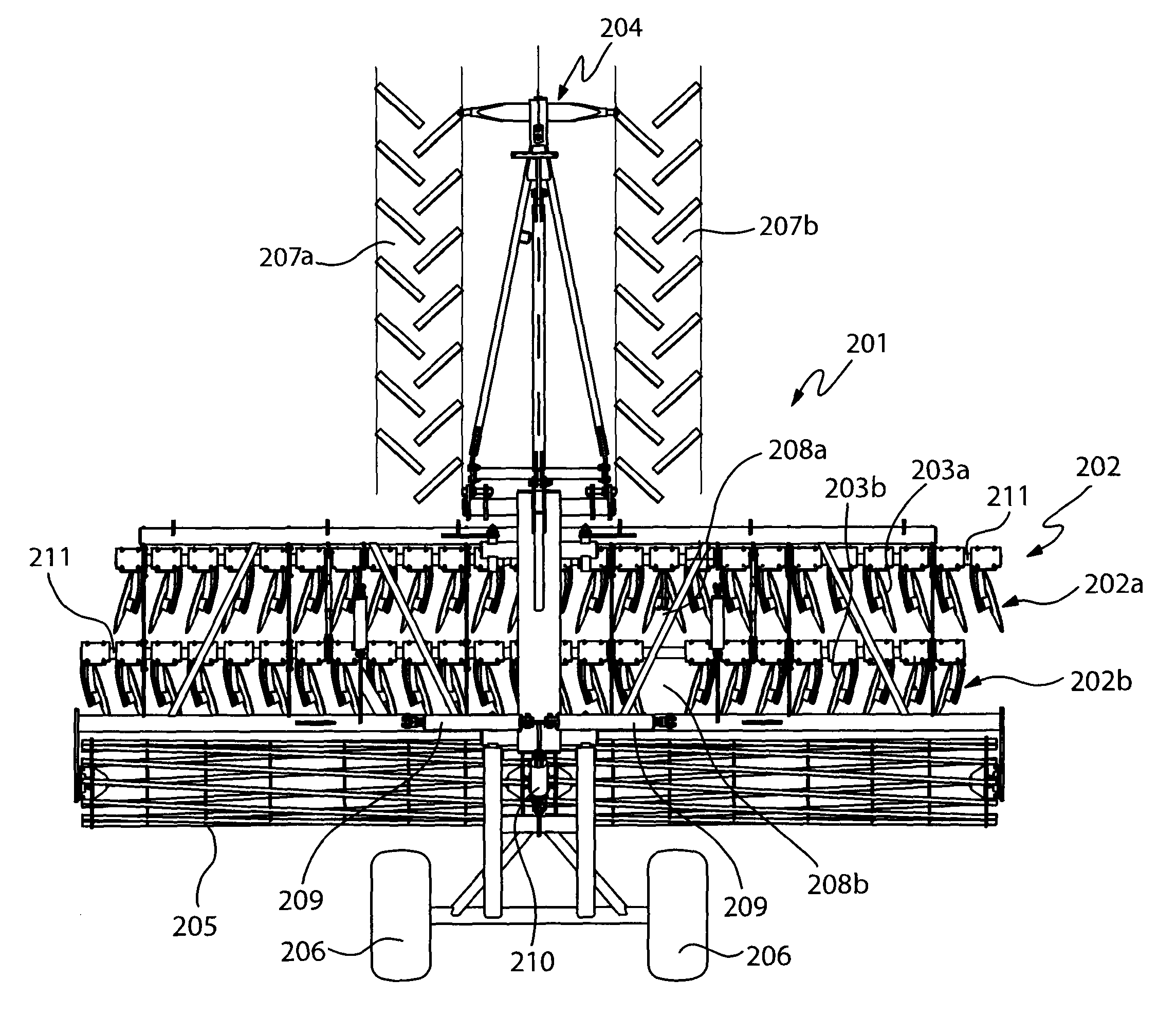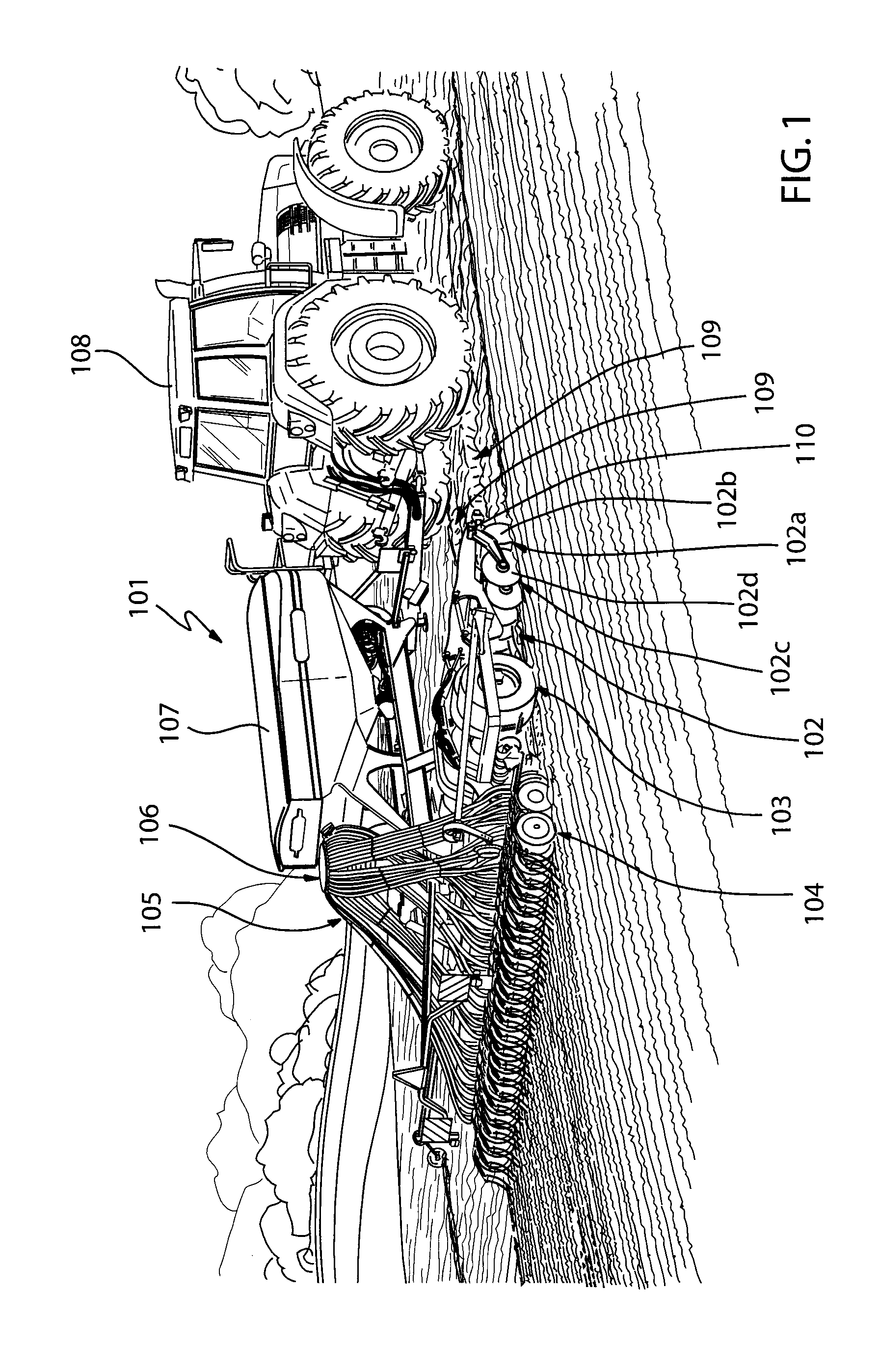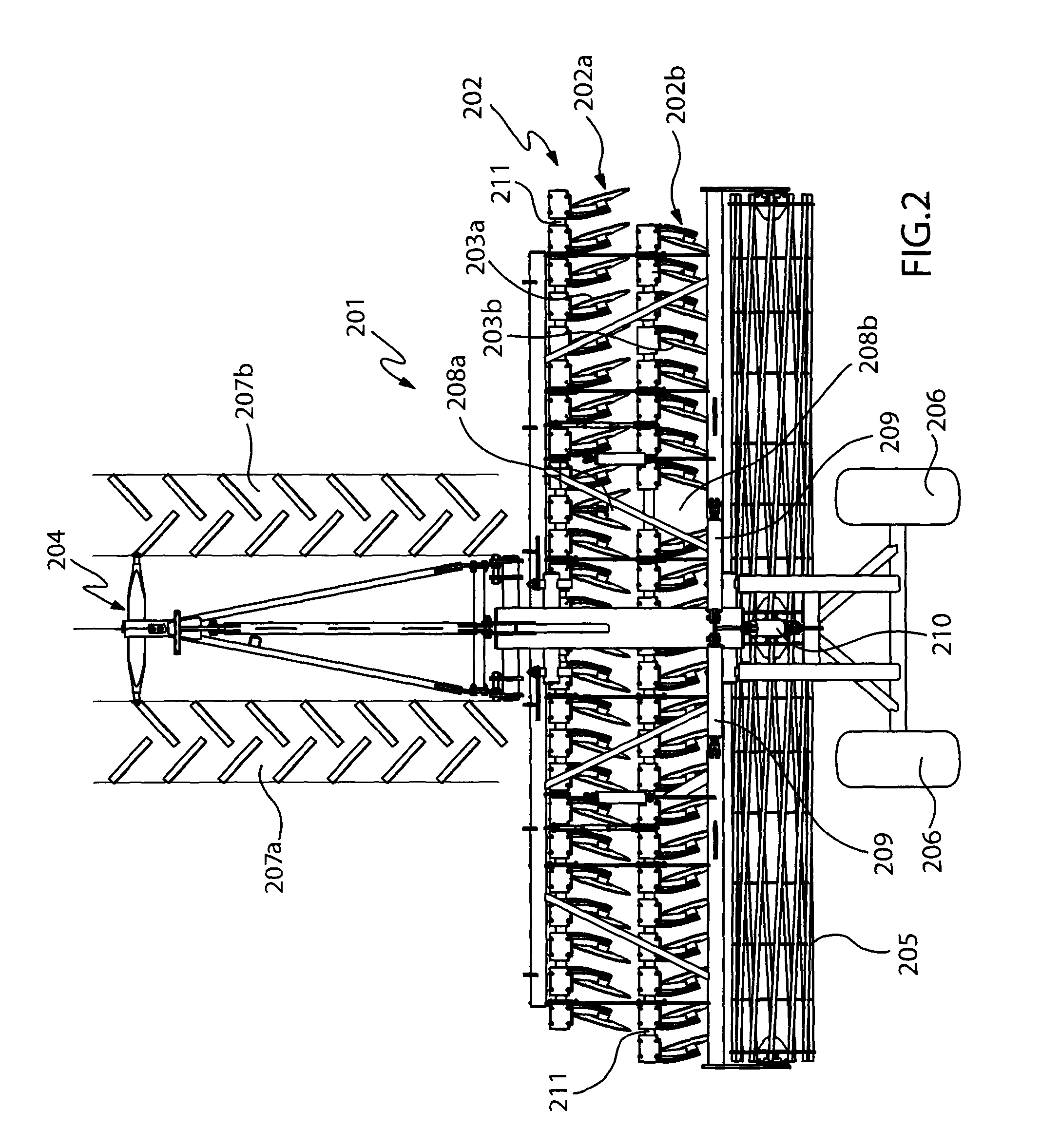Cultivator with two rows of discs in direction of travel
a technology of discs and cultivators, which is applied in the direction of soil loosening devices, agriculture tools and machines, agriculture, etc., can solve the problems of difficult to get such a machine to run straight behind the tractor, difficulty in constructing type of machines, and difficulty in practice, so as to improve the ability of the machine to leave the level, improve the effect of machine function and no extra material costs
- Summary
- Abstract
- Description
- Claims
- Application Information
AI Technical Summary
Benefits of technology
Problems solved by technology
Method used
Image
Examples
first embodiment
[0017]FIG. 2 illustrates an agricultural machine 201 with a device 202 according to the invention. The device 202 according to the invention comprises a frame structure with discs 203a and 203b arranged in X-shape, i.e. where the fore row 202a has discs 203a angled outwards towards the side of the machine and the rear row 202b has discs 202b, which are angled inwards from the side of the machine. This machine has rotatable frame beams. The discs 203a and 203b in the disc implement rows 202a and 202b resp. are suspended in frame beams with rubber elements in order to be able to recoil for example on impacts with stones. This agricultural machine 201 is intended for soil cultivation and comprises in addition to the device according to the invention a towing device 204, which can be coupled to a draught vehicle, such as a not shown tractor, a ribbed roller 205 for consolidation and working depth control arranged behind the discs 203a, 203b and wheels 206 for transport. This machine 201...
second embodiment
[0019]FIGS. 3a and 3b show an agricultural machine 301 with a device 304 according to the invention. This diagram shows soil cultivating fore discs 302a, which are mounted on arms which in their turn are recoilably mounted on frame beams 303. The discs 302b on the rear row are visible. Other details have been omitted for the sake of clarity. In order to clarify the device 304 according to the invention, the disc implements 302a and 302b in FIG. 3b have been lifted up from the soil surface to a transport position in order to more clearly show the profile of the soil surface. In this alternative the frame beams are not rotatable. The disc implement rows 302a and 302b of the agricultural machine 301 can be raised and lowered at altered working depth or raised to an appropriate clearance height for turning in the field or for road transport. Both disc implement rows 304a and 304b, which turn, i.e. change orientation, at the point of change 304c, are arranged behind each other in the dir...
PUM
 Login to View More
Login to View More Abstract
Description
Claims
Application Information
 Login to View More
Login to View More - R&D
- Intellectual Property
- Life Sciences
- Materials
- Tech Scout
- Unparalleled Data Quality
- Higher Quality Content
- 60% Fewer Hallucinations
Browse by: Latest US Patents, China's latest patents, Technical Efficacy Thesaurus, Application Domain, Technology Topic, Popular Technical Reports.
© 2025 PatSnap. All rights reserved.Legal|Privacy policy|Modern Slavery Act Transparency Statement|Sitemap|About US| Contact US: help@patsnap.com



